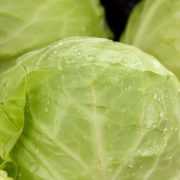Cabbages are among one of the most versatile vegetables in the culinary world. And one reason is that they’re popularly grown around the globe. Cabbages are also paired with beef, fish, pork, tubers, beans, seafood, ham, and poultry. But cabbages are also mainly popular because they’re also delicious when eaten raw.
Still, many recipes require you to cook the cabbage. And though various methods can prepare them, the easiest way to cook cabbage is on the stove. But not everyone knows how to cook cabbages on the stovetop. Plus, you can prepare the dish in different methods this way, and each one comes with a unique set of instructions. Well, the good thing is we’re going to touch these ideas for cooking cabbage on the stove.
Cabbage nutrition facts

Knowing the cabbage
Before delving into the various ways to prepare cabbage on a stove, let’s talk about the vegetable itself. The cabbage is a low-growing, leafy vegetable that’s closely related to kale and cauliflower. Its thick leaves are tasty and rich in nutrients and come in various varieties, namely;
- Red cabbage, with firm, shiny purple leaves that are tightly packed,
- Spring cabbage, with softer leaves that form somewhat of a point at the edges, and
- White cabbage, similar to red cabbage in texture but with paler, sweeter leaves.
- Savoy cabbage, which is the most popular type, with wavy, greenish-white leaves.
Stovetop cabbage cooking methods
All cabbages can be cooked on the stove, but the processes aren’t always the same. The reason is that the cooking methods on the stove vary with each recipe. Let’s touch the different ones;
Boiling
This method is the most popular and probably most effortless way to prepare cabbages over a stove. And whether the cabbages are quartered, shredded, or prepared as separated leaves, you can cook them this way. All you need is to cover the cabbages halfway with water and boil for about 3 to 5 minutes. You can even blanch the cabbages with this method for sautéing later. For this need, cover the cabbages entirely with water, and boil for 3 minutes, then cool them in cold water afterward.
Stir-frying or sautéing
Many people suggest that stir-frying or sautéing helps infuse flavor and crunchiness to cabbages. Whichever the reason, it remains one of the most exciting ways to cook the vegetable. Stir-frying works best when the cabbage is shredded, and the tough stems have been discarded. And it’s a flexible way to cook cabbages over the stove, as it can work with turkey, bacon, shrimps, seafood, and even corned beef.
Heat any preferred oil in a large wok or pan, and add the cabbages with your selected spices and seasonings. Sauté until the leaves seem to wilt and serve. Butter can replace vegetable oil if you like. You can even add some stock or broth and cook for some more time.
Braising
You can also braise the cabbage on the stove if you have the time for an even tastier experience. But this method works best for white and red cabbages since they have the best texture for slow cooking.
Stir-fry some sliced onion in butter or olive oil inside a heavy casserole dish for about five minutes. Then remove the core of the cabbage and shred it into fine slices. Combine the shredded cabbage with the sautéed onion mix.
Crush a few caraway seeds and juniper, and add to the dish. Peel and slice one apple add as well. Then, season the mix, and add some water, red wine, or cider.
Stir the contents well and let it simmer. Then, cover the casserole dish and leave it to cook for about 20 minutes.
With these cooking ideas in mind, you can easily prepare cabbage anytime you wish, on the stovetop. To help, here’s a simple recipe to get your hands on;
Print
How to cook cabbage on the stove
Description
Basic Boiled Cabbage Recipe (6 Servings)
Ingredients
- One cabbage head, medium
- Water
- Four tablespoons butter, melted
- Black pepper, freshly ground
- Salt
Instructions
- Wash the cabbage and divide it into six wedges. Pour water into a Dutch oven to about ½ inch of the container, and mix with some salt, so it’s lightly salted. Let the salted water boil.
- Add the wedges with ½ teaspoon of salt. Cover the Dutch oven and simmer for 9 to 10 minutes. Carefully turn cabbage wedges and simmer for another 8 minutes. The cabbage wedges should be ready when a small paring knife easily slides through the thickest part of the core area.
- Drain out the water and return the Dutch oven to the stove. Leave until the remaining water has evaporated. Pour in the melted butter, so it coats the cabbage wedges. Mix thoroughly but carefully till the coating is even.
Season the wedges with pepper and salt to taste, and serve. To help you further, here’s another video recipe you can try.
